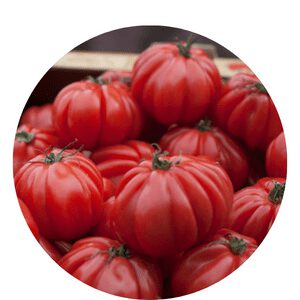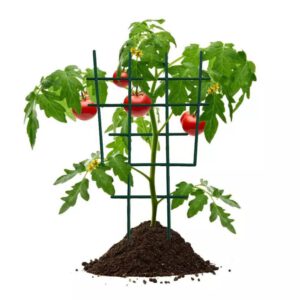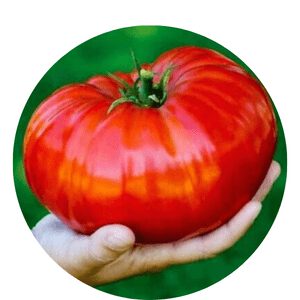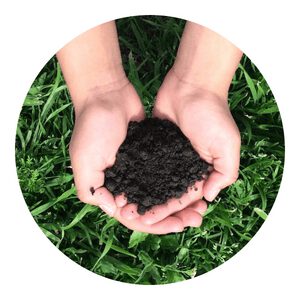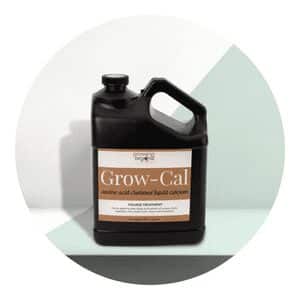How To Grow Organic Tomato in a Raised Beds
Organic tomatoes are a great addition to any home garden.
With the right soil and compost, these nutrient-rich fruits can be grown in raised beds with ease.
If you’re looking for a way to enjoy ripe tomatoes straight from your own backyard, then this guide will show you how to successfully grow organic tomatoes in raised beds.
From choosing the right type of soil to harvesting the fruit, this article will provide the necessary tips and tricks needed to produce juicy, flavorful organic tomatoes.
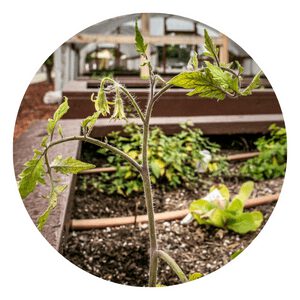
Raised Beds Tomato Menu
Definition of organic tomato growing
Organic tomatoes are a great way to add flavor and nutrition to your garden.
Growing organic tomatoes is an environmentally friendly and sustainable way of producing fresh produce without the use of synthetic fertilizers or pesticides.
Organic tomato growing involves using natural methods, such as composting, crop rotation, companion planting and mulching, to promote healthy soil and plants.
It also includes avoiding any type of chemical treatment that could harm beneficial insects and organisms in the soil.
Organic tomato growing is a great choice for those who want to reduce their environmental impact while still enjoying delicious fruits from their garden.
By choosing organic methods, you can be sure that your tomatoes will be free from chemicals that have been linked to health issues like cancer or other illnesses due to prolonged exposure.
Additionally, you’ll also be helping reduce water pollution by not exposing ground water sources to fertilizer runoff from conventional farming practices.
Benefits of growing tomatoes in raised beds
Raised bed gardening helps to reduce soil compaction, improve drainage, and provide adequate space for tomato plants to spread their roots.
Raised garden beds also create an ideal environment for tomatoes with well-draining soil and consistent moisture levels.
The raised bed’s edges keep weeds away from the tomatoes, helping boost growth and prevent competition for space, water, and nutrients.
Additionally, planting tomatoes in a raised planter eliminates the need to bend down while tending to your tomato patch making it easier on your back!
With its many benefits, growing organic tomatoes in raised beds is a great way to add fresh produce to your backyard garden or patio container.
Materials needed for raised bed setup
To set up a raised bed for growing organic tomatoes, the following materials are needed:
Raised bed frame: This can be made from a variety of materials such as wood, metal, or concrete blocks.
Soil: A good quality, well-draining organic potting soil or garden soil mixture is ideal.
Compost: This can be added to the soil to improve its fertility and structure.
Mulch: A layer of organic mulch (e.g. straw, leaves, or bark) can help conserve moisture and suppress weeds.
Tomato seeds or seedlings: Choose organic, non-GMO tomato varieties suited to your climate and soil.
Fertilizer: An organic, balanced fertilizer can be added to the soil to provide essential nutrients for tomato growth.
Irrigation system: A watering system, such as a drip irrigation setup, can help ensure consistent moisture for the plants.
Trellis or stakes: Tomatoes can grow tall and benefit from support to keep the fruit off the ground and prevent disease.
By using these materials, you can create a healthy and productive environment for growing organic tomatoes in a raised bed.
List of tools and materials for building raised beds
The following is a list of tools and materials needed for building raised beds:
Lumber: Pressure-treated or rot-resistant wood such as cedar or redwood is ideal for building raised beds.
Saw: A handsaw or power saw will be needed to cut the lumber to the desired size.
Drill: A drill will be needed to make pilot holes and secure the corners of the raised bed.
Screws or nails: Galvanized screws or nails are recommended to secure the corners of the raised bed.
Level: A level is used to ensure the raised bed is level and even.
Measuring tape: A measuring tape is used to measure and cut the lumber to the desired size.
Square: A square is used to make sure the corners of the raised bed are square and even.
Hammer: A hammer is used to drive screws or nails into the wood.
Wheelbarrow: A wheelbarrow is useful for transporting soil and other materials to the raised bed.
Shovel: A shovel is used to dig holes for the posts and fill the raised bed with soil.
Garden gloves: Garden gloves protect the hands during the building process.
By having these tools and materials on hand, you can build a sturdy and long-lasting raised bed for your garden.
Explanation of soil requirements for tomatoes
Growing organic tomatoes in a raised bed is an ideal way to produce healthy, juicy and flavourful fruit.
However, certain soil requirements must be met in order for the tomato plants to reach their full potential.
Tomatoes thrive in soil that is slightly acidic, with a pH of 6.2-6.8.
The soil should also be nutrient-dense and well drained, allowing water to pass through freely while providing enough moisture for the plant’s root system to absorb.
To make sure this environment is created, adding compost or rotted manure will enrich the soil with necessary nutrients such as nitrogen and phosphorus that are essential for healthy growth.
Choosing the Right Tomato Varieties for Your Raised Bed
Choosing the right tomato variety for your raised bed is an important decision as it can impact the success of your gardening effort.
Here are a few factors to consider when making your choice:
Climate: Consider the climate in your area, including average temperatures and amount of sunlight, and choose tomato varieties that are well-suited to those conditions.
Purpose: Determine what you want to use the tomatoes for, such as fresh eating, canning, or cooking, and choose varieties that are best for your intended use.
Space: Choose a tomato variety that will fit well in the space you have available in your raised bed, taking into account the size of the plants and their growing habits.
Disease Resistance: Look for tomato varieties that have good resistance to common tomato diseases, such as late blight and verticillium wilt, to help ensure a healthy crop.
Flavor: Choose tomato varieties that have a flavor you enjoy and that you know will taste good in your favorite dishes.
Maturity: Decide on the maturity time of the variety, whether you want early-season or late-season tomatoes.
By considering these factors and doing some research, you can choose tomato varieties that will be well-suited to your raised bed and will provide you with a successful and delicious harvest.
Determinate and indeterminate varieties
Whether growing tomatoes in a traditional garden, or in raised beds, one of the most important decisions to make is whether to choose determinate or indeterminate varieties.
Determinate varieties grow to a certain size and then stop producing fruit. Indeterminate varieties will keep growing and producing tomatoes until frost arrives.
Determinate varieties are great for those who don’t have much space, as they tend to have shorter vines that can be pruned and trained more easily than indeterminate plants.
These types of tomatoes also produce ripe fruit all at once, making them perfect for canning or other preserves.
On the other hand, indeterminate varieties give a continuous supply of tomatoes throughout the season with many small yields instead of just one large harvest.
This makes them ideal for fresh eating as you can pick them when they are at their peak flavor and ripeness levels.
Popular tomato varieties suitable for raised beds
There are many popular tomato varieties that are well-suited to raised beds.
Here are a few of the most popular ones:
Cherry Tomatoes: Cherry tomatoes are small, sweet and ideal for snacking or adding to salads.
Popular cherry tomato varieties include Sungold, Sweet 100 and Super Sweet Cherry.
Heirloom Tomatoes: Heirloom tomatoes are grown from seeds that have been passed down for generations and have unique and flavorful varieties.
Popular heirloom varieties include Brandywine, Green Zebra, and San Marzano.
Beefsteak Tomatoes: Beefsteak tomatoes are large, meaty and ideal for slicing and adding to sandwiches or burgers.
Popular beefsteak tomato varieties include Big Boy, Beefmaster, and Supersteak.
Roma Tomatoes: Roma tomatoes are oval-shaped and ideal for cooking, canning and making sauces.
Popular Roma tomato varieties include San Marzano, Roma VF, and Amish Paste.
Grape Tomatoes: Grape tomatoes are small and sweet, with a similar flavor to cherry tomatoes. They are ideal for snacking or adding to salads.
Popular grape tomato varieties include Sweet Treats, Sugary, and Saladete.
When choosing a tomato variety for your raised bed, consider the size and growth habits of the plant, as well as your intended use for the tomatoes, such as fresh eating or cooking.
With the right variety, you can have a successful and delicious harvest from your raised bed.
Consideration of climate and growing conditions
Climate and growing conditions are especially crucial to pay attention to when gardening organically.
Temperature, humidity, and light exposure all play a role in how your tomatoes grow.
In general, tomatoes prefer warm temperatures of 60-85 degrees Fahrenheit with plenty of sunshine and well-draining soil.
If the temperature drops too low or stays too hot for extended periods of time, growth may slow down or stop altogether.
Additionally, high humidity can disrupt the ripening process; if it’s consistently humid in your area consider using burlap or other breathable material as a cover over your raised bed during peak summer months.
Preparing the Raised Bed
A raised bed is an ideal way to grow organic tomatoes.
It allows you to control the soil and environment around your tomato plants, giving you maximum control over their growth and yield.
Preparing the raised bed properly is key to getting a successful harvest of organic tomatoes.
Steps for preparing soil and adding organic fertilizers
Preparing the soil and adding organic fertilizers are important steps in growing healthy and productive tomato plants in a raised bed.
Here are the steps for preparing soil and adding organic fertilizers for growing tomatoes in a raised bed:
Test the soil: Before planting, it’s important to test the soil in your raised bed to determine its pH level and nutrient content.
Soil test kits are readily available and can be purchased at most garden centers.
Improve soil structure: If the soil in your raised bed is heavy or compacted, you may need to amend it with compost, peat moss, or other organic matter to improve its structure and fertility.
Add organic fertilizers: Adding organic fertilizers, such as compost, well-rotted manure, or fish emulsion, can help to improve the soil fertility and provide essential nutrients to your tomato plants.
Mix the fertilizers into the soil: Before planting, mix the organic fertilizers into the soil to a depth of at least 8 inches.
Water the soil: After adding the organic fertilizers, water the soil thoroughly to help distribute the nutrients evenly.
Apply a side dressing of fertilizer: After the plants have established themselves and begin to produce fruit, it can be beneficial to apply a side dressing of fertilizer, such as compost tea or a balanced organic fertilizer, around the base of the plants.
By following these steps, you can ensure that the soil in your raised bed is fertile and nutrient-rich, leading to healthy and productive tomato plants.
Remember, it’s important to follow the recommended application rates on the fertilizer packages to avoid over-fertilizing and damaging the plants.
Planting and Caring for Tomato Plants
To get started on your tomato-growing journey, begin by preparing your raised bed with high-quality compost or potting soil.
Make sure it’s light enough for roots to spread easily, as this will improve the quality of your crop.
Next, sow tomato seeds directly into the soil around 1 inch deep so they have plenty of room to thrive.
Once they emerge above ground level, thin out any seedlings that are too close together – only leaving one plant every 6 inches.
Steps for planting tomato seedlings or seeds
Planting tomatoes in a raised bed is a great way to grow a bountiful crop.
Here are the steps for planting tomato seedlings or seeds in a raised bed:
Choose the Right Spot: Choose a sunny spot in your raised bed that has good drainage and is protected from strong winds.
Prepare the Soil: Work compost and aged manure into the soil to improve its fertility and structure.
Test the soil pH and adjust if necessary to ensure it is between 6.0 and 7.0.
Plant Seedlings or Seeds: If planting seedlings, dig a hole large enough to accommodate the root ball and water well.
If planting seeds, sow them 1/4 inch deep in rows, spacing them 18 to 24 inches apart.
Water and Fertilize: Water your seedlings or seeds well after planting and then regularly throughout the growing season.
Fertilize your plants every 2-3 weeks with a balanced tomato fertilizer or compost tea.
Provide Support: Tomatoes need support as they grow, so consider using stakes, cages, or trellises.
Train the plants to grow upward, tying them to the support as needed.
Mulch: Apply a 2-3 inch layer of mulch around the base of your tomato plants to help conserve moisture and control weeds.
Monitor and Control Pests and Diseases: Regularly monitor your plants for signs of pests and diseases and take steps to prevent and control them as needed.
By following these steps, you can successfully plant and grow tomatoes in your raised bed, providing you with a bountiful crop of juicy, delicious tomatoes.
Importance of proper spacing and support for tomato plants
Whether you choose to grow your tomatoes in the ground or in raised beds, proper spacing and support for your tomato plants is essential for a successful harvest.
Properly spaced and supported tomato plants will give each plant an adequate amount of space to produce healthy fruits without overcrowding.
Tomato plants also require some form of support such as stakes or cages to prevent them from falling over due to their heavy fruit production.
When planting in raised beds, it is important to line the edges with a sturdy material, like wood, that can provide extra support if needed.
Additionally, planning your rows ahead of time will ensure that you have enough space between each row so that light and air can reach all parts of the bed properly.
Trellising and staking methods
Trellising and staking are important methods for supporting tomato plants in a raised bed.
Both methods help the plants grow upward, conserve space, and improve air circulation around the foliage, which can help prevent pests and diseases.
Here’s a brief explanation of each method:
Trellising: Trellising involves tying the tomato plants to a support system, such as a lattice or string, as they grow.
This allows the plants to grow upward, conserving space and improving air circulation.
The most common trellising method is called the “string trellis” where you run a string from the ground to the top of the trellis and then tie the stem of the plant to the string as it grows.
Staking: Staking involves driving a wooden or metal stake into the ground near each tomato plant and tying the stem to the stake as it grows.
Staking provides individual support for each plant and is a good option for plants that are prone to heavy fruit production.
When trellising or staking, it’s important to tie the plants loosely and check the ties regularly to make sure they are not restricting the plant’s growth.
Additionally, it’s a good idea to mulch around the base of the plants to conserve moisture and reduce the risk of disease.
Ultimately, the best method for supporting your tomato plants in a raised bed will depend on the size and growth habit of your plants and the space you have available.
By using one of these methods, you can help your tomato plants grow healthy and strong, leading to a bountiful harvest.
Organic Pest Management
Organic pest management is an important part of growing organic tomatoes in a raised bed.
Without proper pest management, your plants can be severely damaged or even killed.
Fortunately, there are several methods that you can use to keep pests away from your tomato crop without resorting to harmful chemical pesticides.
Aphids and spider mites are two common pests that feed on the leaves and stems of tomato plants, as well as other garden vegetables.
You should also watch for signs of blight or fungal infections which can spread quickly if left untreated.
To prevent these conditions from occurring, it’s important to remove any diseased plant material promptly and keep weeds away from your raised beds.
A raised bed of soil enriched, Organic tomatoes from which I'll fetch. For this bounty I cannot begrudge, Stacking up a mountain of fresh produce. Tomatoes that gleam in the morning sun, Growing plump and juicy just for fun. Vine-ripe to harvest before its done, Planting organic tomatoes is second to none.
Chappy The Gardener
Common tomato pests and diseases
Growing tomatoes in raised beds can be a rewarding experience, but it is important to be aware of common pests and diseases that can impact your crop.
Here is an overview of some of the most common issues:
Tomato Hornworm: The tomato hornworm is a large green caterpillar that can cause significant damage to tomato plants.
It feeds on leaves, stems, and fruit.
Aphids: Aphids are small insects that can cause damage to tomato plants by sucking the sap from the leaves and stems.
They can also spread disease.
Whiteflies: Whiteflies are tiny insects that can also cause damage to tomato plants by sucking the sap.
They can also spread disease.
Blight: Late blight is a fungal disease that can quickly kill tomato plants.
It is caused by the pathogen Phytophthora infestans and is particularly problematic in wet and humid conditions.
Wilt: Verticillium wilt is a fungal disease that can cause the leaves of tomato plants to wilt and the plant to die.
It is spread through soil and can be difficult to control.
Blossom End Rot: Blossom end rot is a condition that causes the bottom of the tomato to rot and turn black.
It is caused by a lack of calcium in the soil or an inconsistent water supply.
By being aware of these common pests and diseases and taking steps to prevent and manage them, you can have a successful tomato crop in your raised bed.
This can include using insecticides or companion planting, as well as regularly monitoring your plants and harvesting and rotating crops to prevent soil-borne diseases.
Organic methods for preventing and controlling pests and diseases
Growing tomatoes in a raised bed can be a rewarding experience, but it is important to be aware of and prevent common pests and diseases.
Here are some organic methods for preventing and controlling pests and diseases in your tomato raised bed:
Crop rotation: Rotating your crops every year helps to reduce the buildup of pests and diseases in the soil.
Companion planting: Planting companion crops, such as basil or marigold, near your tomatoes can help to deter pests and improve the health of the soil.
Mulching: Applying a 2-3 inch layer of mulch around the base of your tomato plants can help conserve moisture, control weeds, and reduce the risk of disease.
Proper spacing: Proper spacing of your tomato plants can help to improve air circulation, reduce humidity, and prevent the spread of disease.
Handpicking: Regularly checking your tomato plants for signs of pests and handpicking any that you find can be an effective way to control small infestations.
Neem oil: Neem oil is a natural insecticide made from the seeds of the neem tree. It can be used to control a variety of pests, including aphids, whiteflies, and hornworms.
Diatomaceous earth: Diatomaceous earth is a natural pest control made from the fossilized remains of microscopic algae. It works by puncturing the exoskeleton of pests, causing them to dehydrate and die.
Biodiverse habitat: Encouraging a diverse habitat in and around your raised bed by planting a variety of plants and providing shelter for beneficial insects can help to control pests and reduce the risk of disease.
By using these organic methods, you can prevent and control pests and diseases in your tomato raised bed, leading to a healthy and productive crop.
Harvesting and Storing Tomatoes
Harvesting and Storing Tomatoes is an essential part of growing organic tomatoes in a raised bed.
It is important to harvest tomatoes at the peak of ripeness, as this ensures the fullest flavor and nutrition for your fruit.
The best time to harvest is when the tomato has completely changed color from green to its ripe red or orange, depending on what variety you have chosen.
Once harvested, it’s important to store tomatoes correctly in order for them to retain their flavor and nutrition.
Tomatoes should be stored at room temperature away from direct sunlight and drafts.
To prevent them from spoiling too quickly, place them in a single layer on a plate or tray with plenty of space between each fruit so air can circulate around them.
Organic Fertilizer
Growing tomatoes in a raised bed can be improved by using organic fertilizers to provide essential nutrients and improve soil fertility.
Here are 7 types of organic fertilizers that are beneficial for tomato growth in a raised bed:
Compost: Compost is a rich and diverse organic matter that provides a wide range of nutrients to plants.
Well-rotted manure: Well-rotted manure, such as horse or chicken manure, is a great source of nitrogen and other essential nutrients for tomato plants.
Fish emulsion: Fish emulsion is a liquid fertilizer made from fish waste and is high in nitrogen, phosphorus, and other essential nutrients.
Seaweed extract: Seaweed extract is a natural fertilizer made from seaweed and is high in essential minerals and micronutrients.
Rock minerals: Rock minerals, such as rock phosphate, rock potash, and azomite, are natural sources of essential plant nutrients and can be added to the soil.
Bone meal: Bone meal is a slow-release fertilizer made from ground animal bones and is a rich source of phosphorus, which is essential for root development and flower and fruit production.
Alfalfa meal: Alfalfa meal is a slow-release fertilizer made from dried alfalfa plants and is a rich source of nitrogen, phosphorus, and potassium.
By using these organic fertilizers in combination, you can provide your tomato plants with a balanced and diverse supply of essential nutrients, leading to healthy and productive growth in your raised bed.
Best companion plants to grow with organic tomatoes in raised beds
Growing companion plants alongside your organic tomatoes in a raised bed can provide a variety of benefits, including increased yields, improved soil health, and reduced pest problems.
Here are some of the best companion plants to grow with organic tomatoes in raised beds:
Basil: Basil is a great companion plant for tomatoes as it repels pests and improves the flavor of the tomatoes.
Marigolds: Marigolds have a strong fragrance that can help to repel pests, including tomato fruit worms and root-knot nematodes.
Borage: Borage is a good companion plant for tomatoes as it improves soil health, repels pests, and attracts pollinators.
Garlic: Garlic is a great companion plant for tomatoes as it repels pests and improves the health and flavor of the tomatoes.
Nasturtiums: Nasturtiums have a strong fragrance that can help to repel pests, including aphids and whiteflies, and they also attract beneficial insects such as ladybugs and lacewings.
Mint: Mint is a good companion plant for tomatoes as it repels pests and improves soil health, while also providing a pleasant fragrance.
Chives: Chives are a good companion plant for tomatoes as they repel pests, improve soil health, and attract pollinators.
When selecting companion plants for your organic tomatoes in a raised bed, it’s important to choose plants that are compatible in terms of light, water, and soil requirements, and that won’t compete with the tomatoes for resources.
By selecting the right companion plants, you can create a thriving and productive raised bed for your organic tomatoes.
In conclusion, growing organic tomatoes in raised beds is a rewarding experience that can provide delicious, healthy tomatoes throughout the growing season.
With the right soil and water, you can create the perfect environment for tomatoes.
To get the best results, use right-sized containers with good drainage and choose an appropriate tomato variety.
Planting properly spaced plants in your raised bed can maximize your harvest. Proper care of your plants will ensure that they stay healthy and disease free.
Click To Grow
Helps Us Grow – Share If You Like







